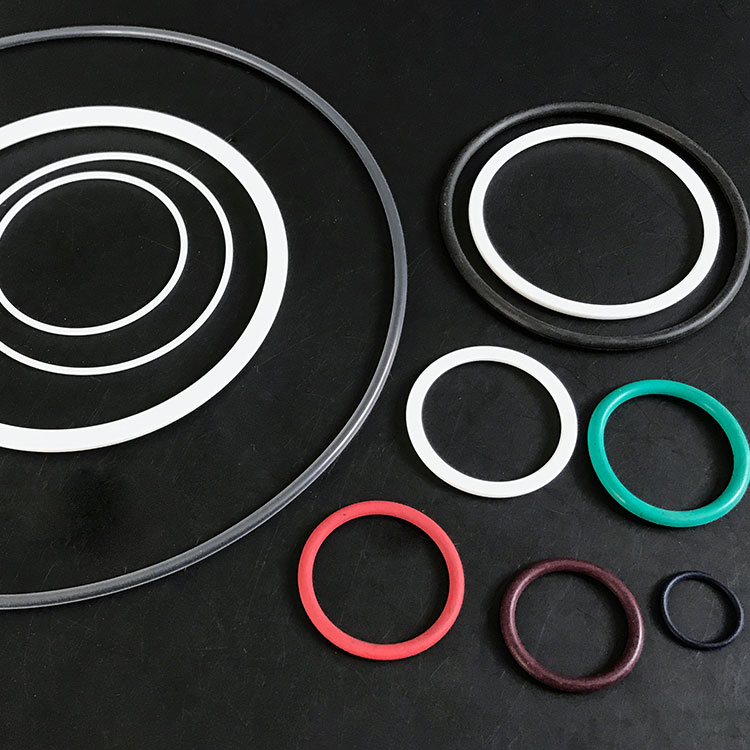
PTFE is the chemically inert of the O-ring materials.
Features:
> Resistant to most chemicals including acids, bases, oils, steam and other chemicals.
> Very tough and abrasive resistant.
> Has minimum friction coefficient of all know pure material
> Non-viscous, no aging
> Now molds can be made according to customers requirements.
However the material is not easily compressed, and therefore may not seal as easily as some of the other polymers. Its outstanding tear resistance and abrasive resistance result in its slippery surface properties that make it advantageous for use in seals in moving systems such as mass spectrometer probes and valves.
Virgin materials Properties
| Properties | Unit | Result |
| Apparent density | g/cm3 | 2.10-2.30 |
| Tensile strength(min) | MPa | 15 |
| Ultimate elongation(min) | % | 150 |
| Working Temp. | ℃ | -180~260 |
| Melting point | ℃ | 327 |
| Produce Max Temp. | ℃ |
385 |
Filled Materials
|
Product No. |
Filled compound and content by weight |
Tension strength Mpa min |
Ultimate strength % min | Compresive strength MPa min |
| 1 | 20% glass fiber | 10 | 120 | 16 |
| 2 | 25% glass fiber | 10 | 100 | 16 |
| 3 | 20% glass fiber graphile | 10 | 120 | 16 |
| 4 | 60% bronze | 10 | 80 | 20 |
| 5 | 15% carbon fiber | 11 | 130 | 16 |
| 6 | 24% bronze 12%glass fiber 6% graphite | 9 | 100 | 16 |
| 7 | 15%glass fiber 105polyikmide 5% graphite | 10 | 120 |
16.7 |
PTFE is recommended for:
Chemical environments
Use is acidic or basic environments
Sealing of moving or sliding surfaces
PTFE is not recommended for:
Low compression vacuum sealing flanges
High vacuum seals
High temperature steam.